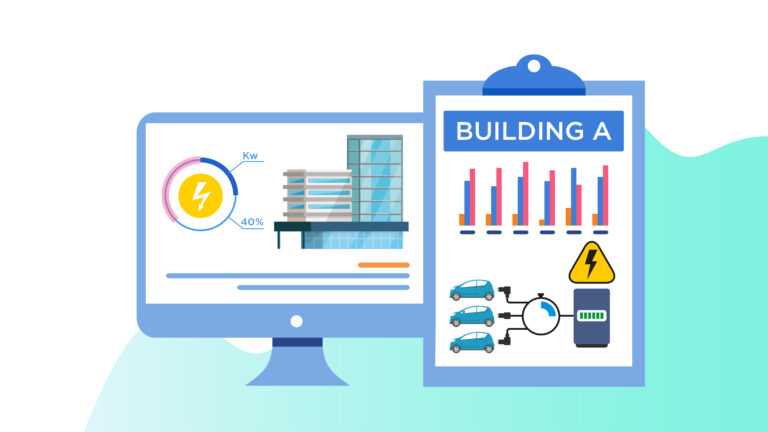When you buy one EV you can charge it with a powerpoint and extension cord. When you’re planning to charge a fleet of electric cars you need to make sure the electricity infrastructure can handle it. The recommendation is to start with the end goal in mind. If you have 100 cars in your fleet, find out what it will take to build a charge station for each one.
Step 4 – Perform an audit of buildings to determine suitability for EV charging infrastructure.
This step is what makes EVs different to the cars we drive today. The current infrastructure for petrol and diesel cars has been built and refined over 100 years since the car replaced the horse and cart.
All of us were born into it. We weren’t there when the horse people were fighting with the car people for space on the road. We didn’t hear the complaints about large parcels of farming land being converted into petrol pumping stations for the cars. Or the complaints about refineries spewing pollution into the air and waterways.
“Horses eat grass”, people would say. “Why do we need to build all this new infrastructure?”
What we do have in 2022 is hindsight. We have enough data and experience to see that the world will continue to grow and electric vehicles will need places to charge.
So when embarking on the journey to convert your fleet to electric vehicles, plan the charging infrastructure with an eye on the future. If you have 300 vehicle now, plan to charge 400 vehicles in 10 years.
The four things that are important when planning charging infrastructure are:
- Site selection
- Selecting the right hardware
- Having the software that can be flexible and unlock value over time
- Maintenance plans for the charging stations
Site selection
When looking at all the possible sites to install a charging station, you need understand how much electricity capacity they have and how much is currently being used.
There are consultants that can perform these audits and monitor electricity usage over seven days to work out the peak load periods and when excess capacity is available. The downtime is when you want to charging your EV fleet.
You also need to know where the current hardware (switchboard board and distribution panels) are located compared to the carpark. One of the biggest costs is cabling. If the carpark is a long way from the main electrical infrastructure, it will be an expensive installation.
EV hardware
This is an area that can scare people off because there are so many options. Installing a high voltage DC (Direct Current) fast charger is expensive and unnecessary in most situations.
Most businesses with passenger cars won’t need to build DC fast chargers because vehicles will only need a top up during the day. They won’t be charging from empty which is what a DC Charger does well.
By completing Step 1 which was, Reviewing how many kilometres your fleet cars travel each week and where they go, you’ll know how many vehicles will use each charging site and how much charge they will need each time.
After completing the building audit and comparing it your fleet travel habits, most businesses will end up installing 5-10 smaller chargers instead of 1 or 2 fast chargers. If you plan to operate electric delivery trucks, than DC chargers may be most suitable
The good news is the EV hardware is a fixed cost. It’s the upgrade to the current electricity infrastructure and the length of cabling to reach the car park that will determine the final cost.
Charge Point Software
If you build multiple charge stations you’ll need software to control access and provide data for internal billing or cost allocation. Most hardware providers will also sell you their software which makes it easy.
The key feature you need is load management to optimise when the vehicles are being charged and the amount of electricity they are taking. A good solution will coordinate EV charging around the peak building loads and maximise the use of solar power. This ecosystem becomes really cool when the EVs are being charged from solar panels for free during the day.
In the future, the EV can becomes a Virtual Power Plant at night to send excess charge back into the building or grid.
Maintenance plans for charging stations
They only have a few moving parts but the charge stations do require maintenance. People are touching them, pulling cables and pushing their buttons. They will also be exposed to the elements. Most hardware providers offer maintenance plans with the hardware. To get to this point you’ve probably made a significant investment in your fleet electrification project, don’t skimp on the maintenance.
You’ll also need a redundancy plan for your charge station. It can be a second charge station or an additional power outlet. An employee (normally a senior executive) with a low battery level won’t be impressed to find it broken at 5pm with no alternatives.
The five steps are:
- Review how many kilometres each vehicle travels during the month and where they go.
- Introduce your staff to electric vehicles via information sessions and experience days.
- Conduct internal surveys to find willing early adopters and identify operational challenges.
- Perform an audit of buildings to determine suitability for EV charging infrastructure.
- Evaluate the available EVs in the market to determine a suitable vehicle.






